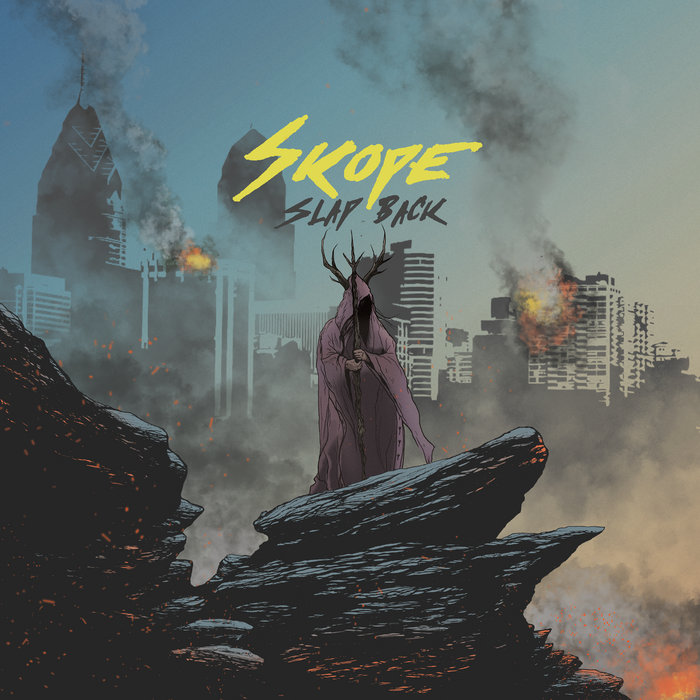
SlapBack – SLUG WIFE
this blog is GROOVY – check out great Soul, Funk, Jazz, Hip Hop, Bass, Breaks , Reggae, House n many more TUNES
Hey there, sound explorers! Let’s take a funky trip through the colorful history of sound design in music. Grab your headphones and adjust that volume; we’re diving into a world where creativity knows no bounds!
Sound design didn’t just pop up out of nowhere; oh no! It’s been creeping into our ears since the early days when folks started banging on rocks, clanging metal, or blowing into hollowed-out tree trunks. Ancient cultures used rudimentary instruments to manipulate sounds for rituals and celebrations. Fast forward to the late 19th century – people like Thomas Edison were cranking out early recordings. You might say those were the first ‘ones and zeros’ (well, kinda).
The term “sound design” popped onto the scene around the 1960s when avant-garde composers began experimenting seriously with electronic devices. Think about it: these pioneers treated sounds like clay, molding them into new forms that would forever change how we experience music.
In the 1970s, things got really wild with synthesizers rolling out in style! Instruments like the Moog synthesizer became household names among musicians wanting to produce unique sounds. These machines allowed artists to create everything from lush pads to eerie bleeps and bloops—so groovy!
Did you know that Wendy Carlos, who composed A Clockwork Orange soundtrack using a Moog synthesizer, was once asked if she could play “Chopsticks” on it? Yep! She replied she’d prefer composing something brand new instead!
Fast-forward to the late ’80s and early ’90s—sampling becomes all the rage! Hip-hop artists rejoiced as they discovered they could use snippets from various songs and manipulate them into something fresh and fierce. Talk about remix culture taking off!
But wait… not all sampling went smoothly! There was a legal minefield waiting for some musicians who forgot about copyright laws while digging through old records.
There’s an infamous story about DJ Shadow unleashing his classic album Endtroducing… (1996), which reportedly featured over 300 samples—and even he lost track at times! His friends joked they had started calling him “DJ Shadowy Memory!”
With computers getting snazzy in the late ’90s, digital audio workstations (DAWs) entered our lives—a total game changer for sound designers everywhere. Programs like Pro Tools allowed musicians to record audio directly onto their computer hard drives’s delightfully responsive screens.
Suddenly everyone wanted studio time at home because hey—why not make mixtapes in your pajamas?
One famous producer confessed he recorded entire albums wearing nothing but boxers while sipping coffee—not exactly what you think of when envisioning high-end studios!
As technology evolved further into this millennium’s embrace—as did genres like ambient and experimental music—influencing countless sub-genres along its path. Artists such as Brian Eno took listeners on dreamy journeys filled with shimmering textures (and maybe even some eye-rolling moments depending on how much espresso one consumed before listening!). Folks loved hanging out in chillout rooms during raves soaked in immersive soundscapes too.
When Eno was asked why he chose ambient music as his primary genre during an interview once said he simply couldn’t find anyone else playing it well enough so decided it was time for him to do things better himself—bold yet subtly hilarious proclamation!
Now we’re here in today’s world where every Chewy Star Wars baritone or spaceship engine noise is meticulously crafted by talented sound designers making waves across films & games alongside musical masterpieces alike!
Not only are musicians utilizing advanced software synths ingeniously designed plugins—but collaboration between disciplines has opened tons more innovative doors than ever before imaginable—it truly feels like magic happening right under our fingertips each day spurring us toward sonic adventures ahead…
And let’s be honest—we all love memes surrounding quirky producers verse pioneering techniques being thrown together unexpectedly leading us down rabbit holes filled with laughter amongst fellow creatives striving together towards greatness:
Ever heard about Hans Zimmer recording actual whale noises underwater for Pirates Of The Caribbean? Yeah… talk about dedication—but honestly can’t help thinking there might have been one confused whale wondering why humans keep trying so hard surfing their territory whilst capturing clips galore!
So there you have it—the jam-packed journey through sound design history sprinkled with tales both whimsical yet edifying showcasing just how much ingenious fun lies within crafting auditory treasures shaping modern music landscapes today onward tomorrow…
Let’s keep exploring those beats while mixing up fresh electronica vibes atop dance floors everywhere as we ride this sonic wave onward forevermore together until next time my groovy pals—with beats alive buzzing loudly beneath all those shared memories created across decades past… Keep spinning those tracks real tight 🎶✨

SlapBack – SLUG WIFE